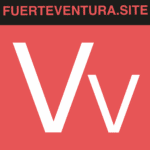The Colonels' Route
The Militia Colonels are an essential element for understanding the life of La Oliva during the 18th and 19th centuries, given their enormous military, judicial, political and economic power, which allowed them to become the true territorial lords.
The people of La Oliva is home to a significant number of buildings, both public and private, which form a dispersed settlement unit and are representative of its historical evolution, the traces of which can be seen in the following six buildings:
House of the Cilla
This building was originally used as a warehouse to store the tithes, the tenth part of the year's harvest paid to the Church. It currently houses a Grain Museum, whose aim is to recover the traditional cultural elements linked to the agricultural cycle.
Address: C/ La Orilla, s/n
Opening hours: Tuesday to Saturday from 10-17h
928 858 998 www.lacilladelaoliva.org
The Church of the Candellaria
A Mudejar and popular building begun at the end of the 16th century, it has the peculiar forms of local architecture. It is a rectangular building with a small sacristy attached to the right side.
It has three naves with two chapels, each with a gabled roof. Inside it houses an interesting collection of related movable property, among which the polyptych of the main altarpiece, the work of the best Baroque painter in the Canary Islands, Juan de Miranda Cejas (1723-1805), stands out. It has been declared an Asset of Cultural Interest (BIC) by Decree of the Government of the Canary Islands, dated 24 September 1993.
Address: C/ Juan Cabrera Méndez, s/n
Opening hours: daily from 9am to 8pm
Hermitage of the Hidden Village
Also known as Ermita de Puerto Rico or La Capellanía, it is a small building with two rooms, one of which was used as a place of worship. The date of its construction is unknown, although popular knowledge assures us that it was the first hermitage in the area, possibly erected in the 16th century when the growth of the population made it necessary to build a building to attend to the spiritual needs of the community. Amongst its exterior decoration, the frames of the room dedicated to worship are noteworthy, which were made from local white stonework and profusely decorated with plant motifs that meander along its surface. A carved cross appears above the lintel of the door.
It has been declared an Asset of Cultural Interest, with the category of Historical Monument, according to Decree 127/1991 of 21 June.
Address: C/ Los Coroneles, s/n
Colonels' House
The Casa de Los Coroneles was built in the second half of the 17th century by the Cabrera Bethencourt family. It was refurbished and extended in the 18th century to serve as the habitual residence of the Colonels, who moved from Betancuria to La Oliva. The Casa de los Coroneles is the finest example of civil architecture in Fuerteventura. The complex has been declared a National Artistic Monument, by Order of 13 June 1979.
Address: C/ Los Coroneles, 28
www.lacasadeloscoroneles.org/info@lacasadeloscoroneles.org
House of Doctor Blas Curbelo Guerra
House of traditional and simple construction. It was the residence of Blas Curbelo Guerra, personal doctor to Colonel Cristóbal Manrique de Lara and his family until the middle of the 19th century...
- Address: C/ Juan Ismael, s/n
Traditions Market
This house was owned by the colonels when, in 1840, Sebastiana Cabrera donated it to her son Pedro Manrique de Lara so that he could live independently and in privacy. The Mercado de Las Tradiciones is located here, a place where small independent entrepreneurs sell a wide range of products related to the primary sector and Fuerteventura's handicrafts.
Address: C/ Juan Ismael, s/n
Opening hours: Tuesdays and Fridays 9-14h




